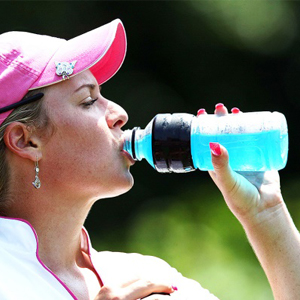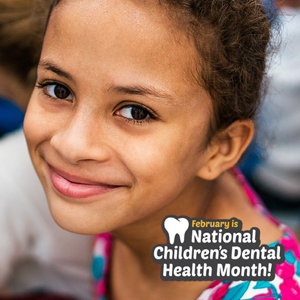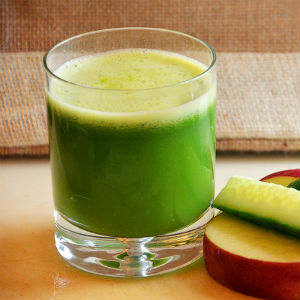Archived Blogs
December, 2016
How Much Calcium Do We Actually Need?
WE’VE ALL HEARD calcium builds strong bones and is key to preventing osteoporosis. But did you know taking in the right amount of calcium also has a huge effect on our oral health?
Calcium Benefits Our Oral Health
Does calcium really make a difference in our oral health? The answer is yes! Even before we’re born, we begin storing a supply of calcium and other nutrients to grow strong, healthy teeth and bones. As we grow older, calcium continues to repair and strengthen our teeth, making them more resistant to decay and fortifying them against disease.
Although many foods contain calcium, the best and most easily absorbed source comes straight from milk and dairy products! Milk is not only a rich source of calcium, but of phosphorous, magnesium, and Vitamin D, which combined together coat teeth in a protective film and ward off harmful acids and bacteria-causing cavities, and also strengthen and reinforce tooth enamel.
How Much Calcium Should I Get Each Day?
How much calcium you need depends on your age and gender. Although the amount you need will differ from others you know, including enough calcium in your diet is important to your oral and overall health.
To give you a better idea of just how much you need, one eight ounce glass of milk contains around 300 milligrams of calcium. Studies show that those who consume more than 800 mg of calcium a day are much less likely to develop gum disease.
The Dietary Reference Intakes lists a recommended amount of calcium for every age:
• Children ages one to eight need anywhere from 500-800 mg a day,
• Teens need around 1,300 mg,
• Adults and nursing mothers ages 19 to 50 need 1,000 mg,
• Older adults and younger mothers need 1,200 mg or more.
What Are Good Sources Of Calcium?
Need some inspiration to increase your calcium intake? Try any of these:
Dairy products
Milk, cheeses, yogurts, buttermilk, cottage cheese, puddings, and ice cream are an easy (and delicious) way to get calcium.
Vegetables
If you don’t like dairy or are lactose intolerant, you still have plenty of options to choose from! Broccoli, collard greens, and kale are good, healthy sources of calcium. Collard greens alone provide 268 mg of calcium per cup!
Other Good Sources
Looking for other options? Oranges, sardines, white beans, tofu, almonds, and some breakfast cereals and juices are all non-dairy alternatives to get your daily source of calcium!
Make Calcium A Part Of Your Diet
Do your teeth and gums a favor by incorporating the right amount of calcium into your daily diet! Enough calcium coupled with good oral hygiene habits make all of the difference in your smile, and will keep your teeth healthy and strong for years to come. If you have any more questions about your daily calcium intake, call us or let us know in the comments below!
Thank you to all of our wonderful patients!
The content on this blog is not intended to be a substitute for professional medical advice, diagnosis, or treatment. Always seek the advice of qualified health providers with questions you may have regarding medical conditions.
November, 2016

‘TIS THE SEASON FOR everything pumpkin. As the poster child of fall, pumpkin doesn’t just star in our autumnal decorations, it shows up on our menus too. And as far as we’re concerned, that’s a good thing. Pumpkin is great for your oral and overall health!
Pumpkin: Fall’s Superfood
We’re glad pumpkin has so many health benefits because it sure is delicious! Pumpkins are high in fiber and are a great source of beta-carotene, which are both important for our health in various ways. They’re also full of potassium which can help lower blood pressure. But the reason we dentists love pumpkin is that it’s great for your smile!
Pumpkins benefit your oral health because they are:
- A great source of zinc. Zinc is considered an anti-plaque agent and is often added to toothpaste to prevent buildup. It also strengthens teeth and bones and boosts gum health.
- Rich in vitamins. Vitamin A found in pumpkin aids in the flow of saliva, keeping your teeth clean and protecting them from decay. Pumpkin’s vitamin C contributes to a healthy immune system, helping you to fight off oral infections.
- High in magnesium. In tandem with calcium, magnesium strengthens tooth enamel and prevents decay. Without magnesium, our enamel would be much weaker and more susceptible to cavity-causing bacteria.
Not All Pumpkin Treats Are Good For You
Now before you go running off to Starbucks for that pumpkin spice latte or the bakery for a batch of pumpkin chocolate chip cookies, there are a few things you should know. Not everything you encounter with pumpkin in it is going to benefit your health.
A lot of the most popular pumpkin snacks–pumpkin pie, bread and cake, in addition to the aforementioned treats–should actually be considered desserts because of their high sugar content. So when it comes to these sugar-filled pumpkin treats, consume them in moderation.
Here are some healthier ways to satisfy your pumpkin cravings this fall:
- Baked pumpkin seeds–a guilt-free, vitamin-filled snack
- Pumpkin smoothie–perfect for breakfast or as a dessert substitute
- Pumpkin soup–a great way to warm up in the colder autumn weather
- Roasted pumpkin–make it the main course, use it as a side dish, or throw it in a salad
Enjoy The Fall Season
Nothing says autumn more than the big orange fruit. When you’re eating all that pumpkin this fall, remember that you’re not only satisfying your tastebuds, but you’re also boosting your oral and overall health! So go ahead, eat more pumpkin.
Wishing a wonderful autumn to all our patients.
October, 2016
Helping Your Kids Learn And Love To Brush Their Teeth
ANY PARENT KNOWS that getting your child to do certain things like eat their veggies, clean their room and even brush their teeth can be difficult. But the reality is that tooth decay is the number one disease affecting young children today.
To combat this, kids need to learn and love to brush their teeth early on in their lives. Our goal is to help your children maintain bright, healthy smiles and help them learn early the importance of good oral hygiene.
Let’s Catch Up On Some Of The Basics
Your child’s first dental visit should be when their first tooth appears, or around their first birthday. Once teeth emerge, you can start brushing them. Brush your child’s teeth twice a day with a child-sized toothbrush and only a smear of toothpaste (the size of a grain of rice). When two teeth begin to touch, it is time to start flossing!
From the ages of three to six, you can use a pea-sized amount of toothpaste. Remind children not to swallow the toothpaste. Continue to help your child brush their teeth until you feel that they can correctly do so on their own.
Our Top Tips On Teaching Your Kids Good Oral Hygiene
It may not be easy, but it will definitely be worth it to teach your kids the value of taking care of their teeth. Here are some things you can do to help them understand just how important a task it is, and even how fun it can be!
Teach Them Why
When kids understand the reason behind something, they are more inclined to do it. You can even make it more interesting by spinning it into a fun story and giving the bacteria in their mouths a name, like the plaque monsters or tooth bugs!
Let Them Participate
Allowing your child to pick out their toothbrush, toothpaste and floss is a great way for them to participate. If you use a timer to help them brush their teeth for the full two minutes, let them press the button. Find ways to get them involved!
Use Positive Reinforcement
Parents know better than anyone what kids will do for prizes. One idea is to use a sticker chart. Every time they brush their teeth well, without complaining, they get to put a sticker on the chart. When the chart is full, they get a prize!
Make It Fun
Whether you turn on their favorite two-minute song or have them brush their stuffed animal’s teeth first, making it fun is key to helping your child love brushing time. There are also many smartphone apps out there dedicated to making oral hygiene more fun!
You can even show them this fun video to help encourage them to brush their teeth!
We Are Proud Partners Of Parents
Although getting your child to love brushing and flossing their teeth is difficult at times, remember that we are your allies in helping ensure their lifelong oral and overall health. If your child is still struggling with brushing and flossing, let us know, we are here to help.
Have any other suggestions that have worked for you and your child? Tell us in the comments below!
Thank you for your trust in our practice.
The content on this blog is not intended to be a substitute for professional medical advice, diagnosis, or treatment. Always seek the advice of qualified health providers with questions you may have regarding medical conditions.
September, 2016

WE’VE MENTIONED IT TIME AND TIME AGAIN… Flossing is an essential part of good oral hygiene. Many people don’t see the need for flossing when they already brush their teeth; others simply hate the task. We understand that it can be tedious! But as your trusted dental professionals, we want to assure you that flossing will greatly benefit your dental and overall health.
So, How Does Flossing Benefit My Health?
Did you know that when you don’t floss, you miss cleaning 35 percent of tooth surfaces in your mouth? That’s because brushing simply cannot get into those hard-to-reach spaces between your teeth. Unfortunately, however, bacteria can! Flossing completes brushing by cleaning the spaces your toothbrush can’t.
Regular flossing can:
- Prevent cavities. Have you ever flossed, even after brushing your teeth, and were surprised to find a remnant of your last meal? Flossing removes food debris and plaque, preventing cavity formation between the teeth, a common place for tooth decay.
- Fight bad breath. If food or plaque are left in between teeth, they will eventually release a bad smell. Yuck!
- Inhibit tartar buildup and gum disease. If left on teeth for too long, plaque hardens into tartar, which can only be removed by a dental professional. The presence of tartar can lead to gum disease and tooth loss. Gum disease is associated with other systemic diseases such as heart disease, diabetes and stroke.
- Improve your appearance. Food debris and plaque make teeth look more yellow and gritty. Clean, healthy teeth always appear whiter and brighter!
From years of experience, we can confidently say that flossing makes a big difference in your oral and overall health.
For Flossing To Work, It Has To Be Done Correctly
To reap the benefits of flossing, it has to be done correctly. In a 2006 study, researchers wanted to see whether flossing at home had the same benefits as having daily flossing done by professionals. The study showed that participants who were flossed professionally had a 40 percent decrease in their risk of cavities than their at-home flossing counterparts. The researchers concluded that flossing, when done properly, has a substantial, positive effect on oral health.
Many people simply snap the floss in between their teeth and pull it back out. The correct way, however, is to curve the floss around the tooth, as if the floss were hugging it. Still curved around the tooth, move the floss up and down to scrape the plaque. Do the same on the other tooth.
Take The Flossing Challenge
We’d like to challenge you to make daily flossing a part of your oral healthcare routine. We promise you’ll feel the difference! If you still have questions about flossing, call or come in to see us. Seeing our patients is the best part of our day!
The content on this blog is not intended to be a substitute for professional medical advice, diagnosis, or treatment. Always seek the advice of qualified health providers with questions you may have regarding medical conditions.
August, 2016
Thinking About Whitening Your Smile?
SO, YOU WANT TO whiten your teeth. You’re not alone! In fact, when the American Academy of Cosmetic Dentistry asked what people would most like to improve about their smile, the most common response was whiter teeth.
There Are Several Teeth Whitening Options
With so many teeth whitening products on the market, you may be left scratching your head as to which one you should choose. As with any type of treatment, it’s important to know all the facts so you can make the best choice for you and your unique smile! Some of the most common teeth whitening options are:
• Whitening toothpastes
• Whitening strips and gels
• Tray-based tooth whiteners
• In-office whitening
Whitening Is Safest And Most Effective When Supervised By A Dentist
You should always consult with your dentist before deciding to whiten, as this cosmetic procedure isn’t for everyone. There are also many benefits to whitening with your dentist!
For example, if you’re considering a tray-based tooth whitener, seeing your dentist is definitely your best option. Your dentist will take an impression of your teeth so that your mouthpiece tray is customized exactly to fit your teeth. This will ensure maximum contact between your teeth and the whitening solution as well as protect your gums.
If you choose in-office whitening, your dentist will provide additional protection for your gums and the soft tissue of your mouth so that no irritation from the whitening solution occurs. To do this, your dentist will apply a gel to the gum tissue or use a rubber shield.
With over-the-counter products, you’re on your own. Your dentist, however, will check your mouth, the type and extent of stains on your teeth, the number of dental restorations you have and consider your medical history to decide which whitening option is best for your specific smile. They will oversee the process and results of the treatment to ensure the treatment’s safety and efficacy.
A Note To Parents
Teeth whitening is a big trend among teenagers. Parents should always supervise their teenagers’ use of whitening products as overuse or failure to follow directions can damage tooth enamel or irritate gums. Be sure to consult with your dentist before allowing your teenager to whiten to make sure they are at an appropriate age and stage of dental development for whitening.
Still curious about how whitening works? Check out the video below to learn more!
Keep Your Smile Beautiful
What truly keeps teeth bright, white and healthy is daily brushing and flossing. But if you feel like your smile is lacking some sparkle or has yellowed over the years, give us a call or come in to see us! We’d be happy to help you brighten up that beautiful smile of yours.
We love our Patients!
The content on this blog is not intended to be a substitute for professional medical advice, diagnosis, or treatment. Always seek the advice of qualified health providers with questions you may have regarding medical conditions.
July, 2016

WE OFTEN TAKE STEPS to achieve that sparkling white smile when we brush in the morning and before we go to bed. The truth is, what we consume throughout the day is often the largest contributor to whether or not our smile will light up a room.
Although there are several causes for tooth discoloration, we can separate them into three basic categories: intrinsic, extrinsic, and age-related discoloration. Here’s how each affects your teeth, and what you can do to ensure a life full of bright, healthy smiles.
Food And Drink Are Large Contributors To Surface Stains
Extrinsic tooth discoloration occurs when the enamel—the outer layer of the tooth—becomes stained. These stains are caused by pigments, acidic content, and other chemical factors (natural or artificial) present in things we enjoy eating and drinking.
A few common culprits for tooth discoloration include:
- Wine
- Coffee
- Tea
- Cola
- Sports drinks
- Hard Candy
- Berries
- Tomato Sauce
Most of these items won’t have an immediate affect on the color of your teeth, but over time, they can begin to wear away and cling to enamel causing unsightly stains. Try to consume these in moderation and always remember to drink plenty of water and brush your teeth after meals.
Here’s a couple of quick tips to help avoid those wine stains!
Trauma Can Discolor Teeth From The Inside Out
Intrinsic tooth discoloration occurs when the inner structure of the tooth—the dentin—begins to darken or develop a yellow tint. This type of discoloration can develop because of a trauma sustained to the tooth. Sometimes when a tooth sustains trauma during childhood, it can damage the developing permanent tooth beneath it, affecting the tooths color. If a trauma is sustained during adulthood, internal bleeding can potentially discolor the damaged tooth.
Other causes include uses of medication at certain stages of life or being born with a rare condition called dentinogenesis imperfecta which can cause gray, amber, or purple discolorations. If you have questions about intrinsic discoloration, come in and see us and we can help answer your questions.
Your Smile Can Change Color With Age
Age-related tooth discoloration is a combination of both intrinsic and extrinsic factors. The dentin inside our teeth naturally yellows as we age. Enamel on the outside of teeth also thins as we get older, allowing the yellow pigment of the dentin to show through. A lifetime of consuming certain foods or smoking cigarettes will also contribute to deep-set stains on the enamel’s surface.
We Can Help Brighten Your Smile
We know just how important it is to provide our patients with bright, healthy smiles. Each situation is unique and we provide our patients with effective solutions for their unique oral health needs. If you have any questions about your smile’s appearance, let us know in the comments below or call and make an appointment today!
Thank you for continuing to be a part of our practice family!
The content on this blog is not intended to be a substitute for professional medical advice, diagnosis, or treatment. Always seek the advice of qualified health providers with questions you may have regarding medical conditions.
June, 2016

GUM ISN’T ALL ABOUT freshening your breath. While it definitely helps after that garlic pasta you had for lunch, did you know chewing sugarless gum can also prevent cavities and improve your oral health?
Chewing Gum Increases Saliva Flow and Prevents Cavities
According to the American Dental Association, studies show that chewing sugar-free gum for 20 minutes after a meal can prevent tooth decay. The act of chewing increases saliva flow in your mouth. The saliva then washes away food and neutralizes acids, cleaning and protecting your teeth from cavity-causing bacteria.
You’ll want to make sure your gum is sugar-free, however. While gum that contains sugar also increases saliva flow, the sugar actually feeds the bacteria in your mouth, putting you at greater risk of decay. We definitely don’t want that!
Quick tip: Sugarless gum sweetened with xylitol even reduces the amount of bacteria that stick to your teeth!
Chewing Gum Helps Strengthen Tooth Enamel
Saliva contains necessary calcium and phosphate that strengthens tooth enamel. After a meal, reinforcing your enamel can be especially beneficial in fighting off bacteria and decay.
Look for Sugarless Gum with the ADA Seal
The ADA seal indicates that the gum has been tested and proven to do at least one or all of these three things: reduce plaque acids and cavities, promote remineralization of tooth enamel, and reduce gingivitis. If you want a sugarless gum you can trust to boost your oral health, look for the ADA seal.
Don't Stop Brushing and Flossing
Even though chewing sugar-free gum can aid in keeping your mouth healthy, it should never serve as a substitute for regular brushing and flossing. Your best defense against decay and dental disease is to brush teeth twice a day using a fluoride toothpaste as well as floss once daily!
Healthy Habits Make for a Healthy Mouth
Add chewing sugarless gum to your list of mouth-healthy habits! Along with daily brushing and flossing, chewing sugar-free gum after meals can help decrease your risk of cavities and strengthen tooth enamel. Of course, after that garlic pasta, fresher breath is an added bonus!
Our patients make our job worthwhile!
The content on this blog is not intended to be a substitute for professional medical advice, diagnosis, or treatment. Always seek the advice of qualified health providers with questions you may have regarding medical conditions.
May, 2016

DRINKING ENERGY AND SPORTS DRINKS on a regular basis is becoming increasingly popular, especially among young people. But did you know that these drinks can be extremely damaging to your teeth?
Sports and Energy Drinks Are Highly Acidic
It’s important to remember the purposes of each of these drinks so as not to consume them more often than you should. Energy drinks may provide a pick-me-up during a long day at work, but drinking one or more energy drinks everyday can damage your teeth in the long run.
Sports drinks were made to keep your body hydrated and energized during bouts of intense exercise. While they may be beneficial during a good workout, these drinks should never take the place of water and should not be consumed casually or on a daily basis.
The reason for this is that both energy and sports drinks are highly acidic. Regularly consuming food or drink with high acidity levels wears away your tooth enamel. This makes teeth more susceptible to cavities, tooth discoloration, and sensitivity.
The Combination of Sugar and Acid Packs a Mean Punch
Energy and sports drinks launch a twofold attack on your teeth: while acid weakens the enamel, sugar feeds cavity-causing bacteria and contributes to decay. Not a good combo! While sugar-free options are available, the majority of these types of drinks are chock full of sugar. Unfortunately, even the sugar-free versions are still as acidic as their sweet counterparts.
Consume Acidic And Sugary Beverages Wisely
Here are some tips to protect your teeth if you are drinking energy and sports drinks:
- Don't make it a daily habit. Drink sports drinks only during high intensity workouts, not on a regular basis, and minimize the amount of energy drinks you consume.
- Drink it all at once instead of sipping throughout the day.
- Rinse out your mouth or chew sugarless gum afterward. This will help increase saliva production and counteract acidity.
Know The Facts, Protect Your Smile
Believe it or not, the adverse effects these drinks have on teeth isn’t widely known. With 30 to 50 percent of U.S. teens consuming energy drinks, and as many as 62 percent consuming at least one sports drink per day, it’s important that people understand how damaging they can be to teeth.
If you have more questions about sports or energy drinks, call us or send us a Facebook message!
We’re always happy to hear from our patients.
Image by Flickr user Keith Allison used under Creative Commons Attribution-ShareAlike 4.0 license. Image cropped and modified from original.
The content on this blog is not intended to be a substitute for professional medical advice, diagnosis, or treatment. Always seek the advice of qualified health providers with questions you may have regarding medical conditions.
April, 2016

How to Make the Most of Your Dental Visits
FOR THE AVERAGE PERSON, you only see your dentist twice a year. While you may think going to the dentist simply requires you to show up and open wide, it’s important to take advantage of each and every dental visit!
We want to answer your questions and address your concerns. Here are some easy tips that will help you maximize your time with the dentist and make the most out of your biannual visits.
Make a Checklist of Questions and Concerns
It’s easy to forget about all the questions you’ve had about your oral health over the past couple of months when you’re sitting in the dental chair. Writing a checklist or note beforehand of things you’d like to ask us or talk to us about can help you remember! For example, have you experienced bleeding while brushing or any new pain or sensitivity? Are there any wounds in your mouth that haven’t healed normally? Let us know–we’re here to help!
Keep Us Updated
You’ve probably heard of something called the mouth-body connection. It simply means that your oral health and overall health are strongly connected. This is why it is important that your dentist knows your complete medical history.
Alert your dentist if you are pregnant or have been diagnosed with diabetes or other illnesses since your last visit. Inform them of any new medications you are taking. Certain illnesses and medications can increase your risk of dental problems and disease. The more your dentist knows about your health, the more personalized your care will be.
Connect With Us On Social Media
We use social media to connect with our patients and facilitate one-on-one relationships with them! Since we only see some of you every six months, our social media tools–like our blog and Facebook page–help us stay in touch.
We try to provide you with relevant and easily accessible information on our social media platforms so you can be informed about both your dental health and our services. Like us on Facebook to learn more and feel free to comment or leave us a private message. Your relationship is important to us!
Thank You!
We can’t say it enough… Thank you, valued patients and friends! We love seeing you healthy and happy!
The content on this blog is not intended to be a substitute for professional medical advice, diagnosis, or treatment. Always seek the advice of qualified health providers with questions you may have regarding medical conditions.
March, 2016

SMILING AT SOMEONE can turn their whole day around. But have you ever thought about the impact the act of smiling has on YOU? Smiling is a hidden superpower that can change our lives for the better if we let it!
Smiling Has Numerous Health Benefits
Did you know that frequent smiling can actually make us healthier? Smiling reduces stress and increases health and mood enhancing hormone levels, such as endorphins. Smiling also helps to lower our blood pressure.
Perhaps even more surprising, smiling can extend our lifespan! A study conducted at Wayne State University in 2010 found that baseball players who smiled in their pictures lived seven years longer on average than those who weren’t smiling in their photos.
Smiling Makes Us Happy
While we generally think of smiling as the result of feeling happy, smiling, even when we don’t feel like it, can actually improve our mood and emotional disposition. In other words, pasting a smile on your face, even if you’re faking it, can make you feel happier!
Here’s why: when we cause our facial muscles to form a smile, our brain’s circuitry of emotion and happiness is activated—whether the smile is genuine or not! A study conducted in the UK found that one smile can provide the same level of brain stimulation as up to 2,000 chocolate bars. What’s more, a smile can be as neurologically stimulating to your brain as receiving $25,000!
Smiling Helps Us Connect With People
One of our most primal instincts as human beings is to smile. Part of the joy of being around a newborn child is seeing them smile! Before they start smiling in the waking hours, they smile involuntarily in their sleep. 3-D ultrasounds show that developing babies even smile in the womb. Simply put, we’ve been smiling since before we were born!
And as it turns out, smiling is absolutely contagious! When we see another smile, it’s pretty hard not to smile ourselves. If you or I observe another person’s smile, mirror neurons will fire in our brain, giving us the sensation that we ourselves are smiling. So, smiling not only makes you feel good, but everyone around you as well!
We Love Your Smile!
Smiling has the power to get you through the good times and the bad! As your trusted dental professionals, we’re here to help you maintain a healthy, beautiful smile so that it can brighten your life and the lives of others. Remember, when in doubt, smile!
Thank you to our wonderful patients! We appreciate you!
Image by Flickr user Giorgio Minguzzi used underCreative Commons Attribution-ShareAlike 4.0 license. Image cropped and modified from original.
The content on this blog is not intended to be a substitute for professional medical advice, diagnosis, or treatment. Always seek the advice of qualified health providers with questions you may have regarding medical conditions.
February, 2016

February Is Children’s Dental Health Month
THE CDC REPORTS that 1 in 5 children (between ages 5 and 11) in the US have untreated tooth decay. Not only should tooth decay be treated in regular dental appointments, it should be prevented! Tooth decay is 100 percent preventable with effective personal care and regular dental cleanings.
In honor of Children’s Dental Health Month, we’re spreading the word about children’s dental health.
YOU Can Help Little Ones Have Healthier Smiles!
- Encourage them to brush for two full minutes. Pick a song about two minutes long and sing it to them during brushing time.
- Set reminders to brush twice a day. Brushing after breakfast and just before bed are the best times for preventing bacteria growth from food.
- Show them flossing is fun, not harmful. Be gentle at first when doing it for them. A bad experience can stop them from flossing on their own.
- Be persistent. Don’t let fussy children off the hook. Be motivating! Kids may gladly brush for a sticker or star if you make it an activity.
- Set their first dental appointment before age 1. Having positive dental experiences early will make dental visits easier and less frightening when older.
Help Us Spread The Word!
Share this message with your friends and family, and especially with the children in your life. If you have any questions about children’s dental health, don’t hesitate to ask us!
Thanks for being our valued patients and friends!
The content on this blog is not intended to be a substitute for professional medical advice, diagnosis, or treatment. Always seek the advice of qualified health providers with questions you may have regarding medical conditions.
Image by Edu Alpendre used under Creative Commons Attribution-ShareAlike 4.0 license.
January, 2016

Why You May Need To See The Dentist More Frequently
GOING TO THE DENTIST TWICE A YEAR, while a good rule of thumb, is not necessarily fitting for everyone. Depending on certain lifestyle choices and medical conditions, some people need to see their dentist even more frequently.
Fifty years ago, there were really no instructions as to how often you should see a dentist. Back then, dentistry was more about fixing existing problems rather than preventing them from occurring. When dentists began recommending biannual check-ups and cleanings as a preventive measure against oral disease and infection, the American population’s dental health vastly improved. However, that doesn’t mean that this twice a year recommendation is a “one size fits all” umbrella.
Who Needs To Go More Than Twice A Year?
There are a number of conditions and circumstances that may require more frequent dental visits. Listed below are people who should talk to their dentist about going more than twice a year:
- Diabetics
- Smokers
- Pregnant women
- People with gum disease
- People who have dry mouth
- People with a weak immune response to bacterial infection
- People who are more prone to cavities or plaque buildup
- People who do not keep up with their dental hygiene very well
- People whose diet is rich in sugary foods and/or drinks
Some people may need to go biannually one year and, due to changing circumstances, need to go more frequently the next. For example, as we get older and start to accumulate more health issues, we might be more prone to damage that bacteria can cause to our teeth and gums. Furthermore, many medications can cause dry mouth which makes it easier for bacteria to grow.
How often you need to make a dental visit is determined by your dentist and hygienist and is based on the health of your gums, as well as how committed you are to a good oral hygiene program. More frequent visits, especially for high-risk patients, can prevent tooth decay, gum disease, and other oral health conditions. The preventive care we provide will save you time, stress, and money.
You Are Unique
You are a unique individual! Keeping your smile healthy means addressing your unique needs. We are not interested in a “one size fits all” mentality. Our practice is devoted to providing you with the best and most specialized care.
Thanks for being our valued patients and friends!
Image by Flickr user Alessandro Valli used underCreative Commons Attribution-ShareAlike 4.0 license. Image cropped and modified from original.
The content on this blog is not intended to be a substitute for professional medical advice, diagnosis, or treatment. Always seek the advice of qualified health providers with questions you may have regarding medical conditions.
December, 2015

WE’VE ALL HEARD VARIOUS “FACTS” when it comes to our oral health—different ways to clean our teeth and gums, what is good or bad for them, etc. As your trusted dental professionals, we’re here to set the record straight about some of the most common oral health myths.
Myth #1: “If my teeth don’t hurt, they are healthy.”
In reality, many dental problems don’t hurt in their beginning stages, such as chronic gum disease and cavities. When they have progressed, however, to where treatment is quite extensive and expensive, you may begin to feel discomfort. Preventing a problem is always better than treating one. Visiting your dentist as frequently as recommended is key in maintaining a healthy body and mouth.
Myth #2: “Bleeding gums are normal.”
When you wash your body, does it bleed? No! It’s not normal for your gums either. In fact, bleeding gums are the first sign of infection. Gums will bleed because plaque accumulates where toothbrushes cannot reach to remove it. This is why flossing daily is so important! Flossing will help reach these plaque-ridden areas, which adds up to about 35 percent of your tooth surface. To heal bleeding gums, consistently brush and floss gently twice a day. If bleeding continues, come see us so we can evaluate your gums for possible gum disease.
Myth #3: “Always rinse your mouth out with water after brushing.”
Have you ever heard the phrase, “Spit, don’t rinse”? Keep this tip in mind while brushing. Toothpaste contains fluoride which helps protect our teeth from dental decay, strengthens tooth enamel, and even reduces the amount of cavity-causing acid that bacteria produce. So, when brushing, spit out excess toothpaste, but refrain from rinsing your mouth out with water. This will help your teeth remain protected far longer throughout the day!
Myth #4: “Mouthwash will solve my bad breath.”
There can be many causes for bad breath and mouthwash alone is not the solution. Bad breath can be caused by certain medications, illnesses, foods, and poor dental hygiene. The most effective way to fight bad breath is through regular brushing, daily flossing, and especially tongue scraping. Tongue scraping gets rid of any remaining bacteria on your tongue, which is the real culprit behind bad breath.
Myth #5: “Brush your teeth immediately after eating.”
We may think that brushing right after eating is good because it gets any food particles that are left behind in our teeth. But brushing within 30 minutes of finishing a meal can actually weaken tooth enamel, especially if you’ve consumed anything sugary or acidic, such as citrus. After a meal, it is best to thoroughly rinse your mouth out with water or chew sugarless gum to increase saliva production. After about 30 minutes, however, brush away!
Busted!
We’ve loved busting these oral health myths so that you have the best and most accurate information out there. If you have any questions, call or come in to see us!
Thank you for reading our blog and placing your trust in our practice!
The content on this blog is not intended to be a substitute for professional medical advice, diagnosis, or treatment. Always seek the advice of qualified health providers with questions you may have regarding medical conditions.
Image by Flickr user paurian used under Creative Commons Attribution-ShareAlike 4.0 license. Image cropped and modified from original.
November, 2015

Alcohol’s Effect On Our Gum Health
EVEN IF YOU only enjoy an occasional glass of wine, it’s important to know how it can affect your gum health. A recent study published in the Journal of Periodontology brings new light to the connection between alcohol consumption and gum disease.
Drinking Can Raise Our Risk For Gum Disease By 27 Percent
Over 500 study participants were asked about their drinking habits, and their gum and overall oral health was evaluated on several levels. This revealed a surprisingly close relationship between alcohol and gum disease risk.
• Men who drank regularly were shown to have an 18 to 27 percent increased risk of gum disease.
• For people who already had periodontal disease, levels of alcohol consumption increased the rate and severity of the condition.
• In participants without periodontal disease, heightened alcohol consumption increased risk factors for gum disease: symptoms like gum detachment, gum bleeding, and increased plaque levels.
Correlative Relationship May Be Caused By Dry Mouth
While further research is needed to evaluate the precise reason for this connection, it seems to be greatly due to dry mouth, a common effect of alcohol consumption. Saliva neutralizes acid in the mouth, and serves to cleanse our mouths from harmful bacteria. Alcohol decreases saliva production, and can strip our mouths of the protection they need.
Preserve Your Smile By Taking Gum Disease Seriously
Gum disease is the #1 cause of tooth loss in adults. 50 percent of those over 30 are affected by some level of gum disease. The good news is that in its early stages, gum disease is reversible with strategic oral care.
Here at our practice, we know how to deal with gum disease and we can help you get control of it.
Talk With Us About Your Habits So We Can Give You The Best Care
Here’s our advice to you: be aware of the risks that alcohol poses to your oral health, especially if you enjoy an occasional (or not-so-occasional) drink. Be upfront with us about your habits, and we can help give you the most effective care and advice to preserve your healthy smile for life.
Thanks for your trust in our practice! We appreciate you.
October, 2015

How Pacifiers Affect Your Baby's Teeth
AS CHILDREN GROW OLDER, some parents begin to worry about their child’s thumb sucking or pacifier habits. This is a normal behavior for an infant, but the older a child gets, the more harm it can do to their oral and dental development.
The Pros & Cons of Pacifiers
Pacifiers have many benefits for infants, including reducing a child’s chance ofSudden Infant Death Syndrome (SIDS), or simply helping them drift off to sleep at night! However, if pacifier use or thumb sucking is prolonged, it can negatively impact your child’s growing teeth and mouth.
Some side effects of prolonged pacifier use and thumbsucking include:
• protrusive upper front teeth,
• tipped back lower front teeth,
• open bite,
• and crossbite.
There’s More Than One Way to Help Your Child Quit
When is the right time to help your child kick the habit of using a pacifier or sucking their thumb? To allow the body to correct any oral health issues that may have been caused by persistent sucking, the Academy of General Dentistry suggests that an infant quit using a pacifier before the age of 2. If your child enjoys sucking their thumb, it is best to help them stop no later than age 4.
Tips for helping your child quit thumb sucking:
• Praise your child for not sucking her thumb, instead of getting angry or irritated when he or she does.
• Consider rewards when your child abstains for a certain period of time.
Tips to help your baby quit using a pacifier:
• Dip the pacifier in vinegar.
• Pierce or cut the top of the pacifier to decrease the amount of sucking possible.
Let’s Visit About Your Questions Or Concerns
If you have any questions or concerns about your child’s thumb sucking or pacifier habits please contact us! We would love to discuss what’s best for your child. Do you have any tips of your own for quitting pacifier use? Please share below!
Thanks for being a valued part of our practice family!
September, 2015
Juice Smarter: Your Teeth Will Thank You
JUICING IS ONE OF THE MOST POPULAR health fads right now, but how does it affect your smile?

Juices Can Be Tough On Teeth
Many juices contain high amounts of acid and sugar that can compromise healthy teeth. Frequently drinking juices with overly acidic and sugary ingredients can begin to wear away the enamel of our teeth, putting us at greater risk for cavities.
But don’t fret—you don’t need to throw away your juicer just yet! There are a variety of simple ways to make your juices healthier and still taste great.
Choose Ingredients That Strengthen Your Smile
Make your juices healthier by considering some of these options:
- Add more leafy greens! Leafy greens help build strong bones and strong teeth because they are high in calcium, magnesium and phosphorus. Greens won’t spike your blood sugar like sugary fruits and vegetables will.
- Use fruit sparingly and when you do, be sure to use ripe fruits. Unripe fruits tend to have more acid than ripened ones.
- Add a teaspoon of coconut oil. Coconut oil, amongst other amazing properties, contains antibacterial properties that are great for your teeth!
- Add cranberry juice! Amongst numerous vitamins and nutrients, fresh cranberries have compounds that keep cavity-causing bacteria from sticking to your teeth. So, to add nutrients and teeth-protecting properties, simply add a splash of cranberry juice to your recipe.
- Steer clear from highly pigmented foods. Fruits and vegetables that are strongly pigmented can potentially stain your teeth. Examples of these foods are: dark berries and beets.
What you put into your juices is the important thing to keep in mind when juicing. Ask yourself when adding ingredients: Does this add nutrients to my juice? Will my teeth benefit from this or not? Is there too much sugar or acid in this ingredient?
We Care About Your Whole Body Health
By being mindful and aware of the ingredients you add to your juices, you can begin making smart decisions for not only your teeth, but your overall health. If you have any questions about how the juices you enjoy affect your teeth, feel free to schedule an appointment to see us or leave a comment below!
Thank you for reading our blog and being our valued patient and friend!
The content on this blog is not intended to be a substitute for professional medical advice, diagnosis, or treatment. Always seek the advice of qualified health providers with questions you may have regarding medical conditions.
